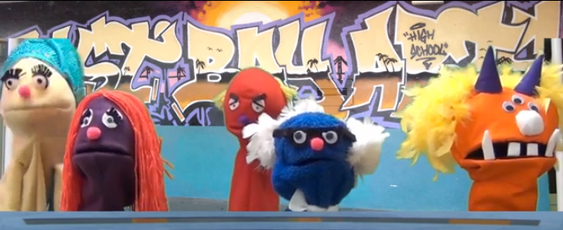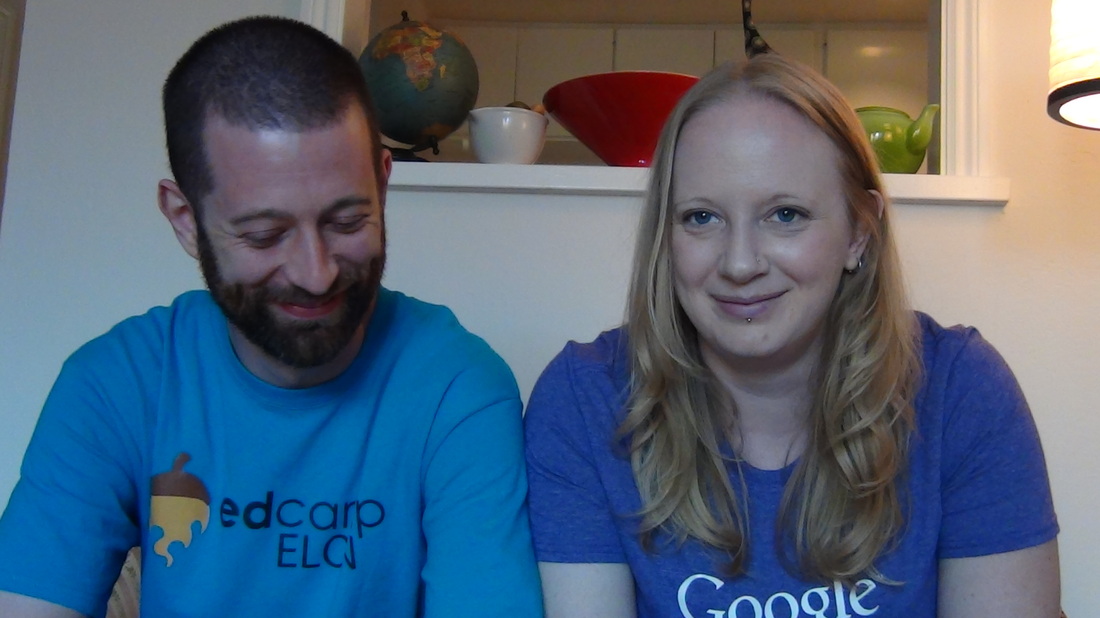I never feel like we can truly capture how much has changed as a result of committing to work together. The easy answer is "everything" but even that doesn't feel like enough. In truth, meeting Andrew was like taking collaboration crack - he and I started creating and never looked back, to the point now where not one aspect of my life is untouched by the influence of our collaboration.
And yet, it is only recently that I've begun to see the way in which my view of creativity has been shaped by our collaboration.
I never thought of myself as an artistic or creative person. I do know how to play several instruments, and I can sew, knit, and crochet, but the nerve damage in my hands has made the fine motor skills required for art nearly impossible for me. You see, my definition of "artistic" was "can draw well" and because I couldn't, and had little "innate talent" (really, a desire to work as hard as I would need to in order to improve) I decided I just wasn't a creative person.
What I missed in my narrow definition was that creativity isn't about drawing. It's about thinking differently. It's about bringing new things into the world for the purpose of making people's lives better. That's what I learned in my first few years teaching, and became for me the point of my professional journey: helping students see differently, and create in them a desire to continue learning because of the content and skills developed in my class.
When I met Andrew, I exaggerated my video editing capabilities. I knew I could figure it out if I really wanted to, but hadn't had the need to before that point. He brought the impetus, so I learned how to edit videos. And eventually, I started to see video editing as a creative endeavour as much as visual art is. All art is about telling a story, not about lines or shapes on a page.
The story we were telling was not just one of classroom transformation. It was one of personal transformation. I now see the ways in which I'm tremendously creative, almost to the point that I feel ridiculous for ever thinking that I wasn't.
Seeing that shift, I began to see the role of creativity in my classroom differently too. I used to have art projects as part of the curriculum, but I phased them out because rigor. I used to have students do elaborate projects that were often beautiful and artistic, but I stopped because standards. I used to try and make creativity the bedrock of the student experience in my class, despite my narrow definition, but I stopped because confidence.
Genius Hour cemented in my mind how much has shifted because of the influence Andrew has had on my practice. Actually, that's not quite accurate. Yes, it was Andrew's entrance that marked the beginning of the change, but really, it's all about what we've built collaboratively. It wasn't Andrew or me acting in isolation - all the good ideas and creativity and innovation come as products of our time spent in collaboration. None of it exists without all of it.
My students almost all did their project on something to do with creativity. I heard them discussing what it means to be creative, and it mirrors my own (much better) understanding: being creative is seeing possibilities where others see only limitations. It is being willing to be different, even when that's the harder choice. It is taking risks and daring greatly, even when it pushes us so close to the edge that we fall off a few times. They all understand that.
And that's the real beauty from Genius Hour: only a few students wrote down facts or specific details about the content of what we learned. Instead, they made abstract renderings of those ideas. The common themes were about divergent thinking, growth mindset, factory-models of education being crushed by a new way of learning, how puppets are a pedagogical tool, and even why flipped learning gives them more control over what they learn, how they learn it, and how to demonstrate their learning.
Our students are experiencing something profoundly transformative: that collaboration drives creativity, and you have to practice taking risks to be able to truly learn.
I now know how to use Adobe After Effects - professional level graphics software as well as basic video editing programs because the collaborative relationship Andrew and I forged compelled me to truly learn, even when it took failure after failure to produce success. In a very real way, I am now able to be much more creative because there was a space made and a spark of inspiration lit by the relationship Andrew and I have. And my creativity fuels the learning environment in which my students catch the spark to light their own creative furnaces.
That's what collaboration can do: light fires that had been extinguished. Foster creativity and critical thinking. Provide the space and motivation to learn something deeply. That's why Andrew and I will continue to tell our story. We believe that ALL teachers should have the same opportunity we did to be transformed. We believe that our students deserve that.
And we believe that our collaboration will continue to produce more creativity as more teachers start the journey we've undertaken together. I hope we can continue to point the way to the road less travelled, where while there are thorns and rocks and unsure footing, there is also great beauty and joy and when you've walked far enough, you get to see something that never before existed. Something that wouldn't be in the world, but for you finding it together. It is that collaboration that will make you more creative, and will in turn give your students more opportunities to be creative as well.
Collaboration will change your view of creativity forever, just as it has mine.
This collaborative road will be more difficult. Sometimes, it will be so difficult that you struggle to remember why you started walking in the first place, but if you have found a partner who makes your classroom better, it will be worth every moment of difficulty.
We - all of us - are #bettertogether.





 RSS Feed
RSS Feed
